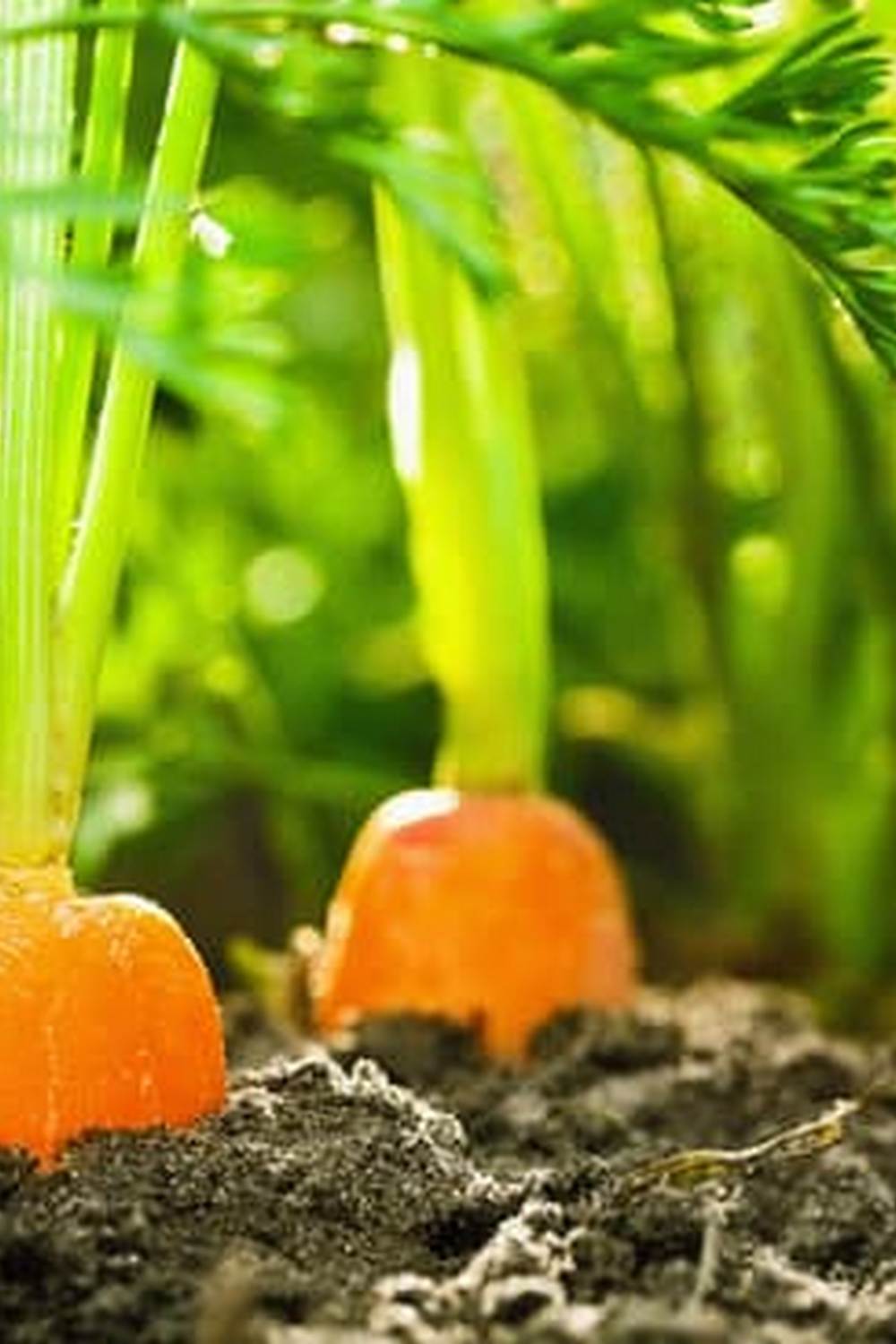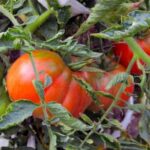Are you looking for some vegetable gardening ideas for your backyard? Growing your own vegetables at home can be a rewarding and fulfilling experience. Not only does it provide you with fresh, organic produce, but it also allows you to connect with nature and enjoy the satisfaction of growing your food.
Having a backyard vegetable garden comes with numerous benefits. You can control what goes into your food, ensuring that you are consuming healthy and pesticide-free vegetables. Additionally, tending to a garden can be therapeutic and a great way to relieve stress. With the right knowledge and guidance, even beginners can successfully grow their vegetables at home.
When planning your backyard vegetable garden, it is essential to choose the right vegetables that will thrive in your specific climate and soil conditions. Consider factors such as sunlight exposure, drainage, and space requirements before selecting the plants you want to grow. By carefully selecting your vegetables, you can increase the chances of having a bountiful harvest at the end of the season.
Benefits of Growing Your Own Vegetables at Home
Growing your own vegetables at home provides numerous benefits beyond just the satisfaction of a successful harvest. One of the main advantages is the assurance of knowing exactly where your food comes from and how it was grown.
By eliminating the need for store-bought produce, you can reduce exposure to pesticides and chemicals that are often used in commercial farming. Additionally, you have control over what fertilizers and amendments are used in your garden, allowing you to prioritize organic and sustainable practices.
Another benefit of growing vegetables in your backyard is the significant cost savings that come with producing your own food. With rising grocery prices, having a steady supply of fresh produce right outside your door can help reduce monthly expenses while also providing high-quality, nutritious ingredients for meals. In addition, homegrown vegetables often taste better than store-bought counterparts, as they can be picked at peak ripeness and consumed immediately for optimal flavor.
Furthermore, cultivating a backyard vegetable garden can promote physical activity and mental well-being. The act of gardening itself is a great way to stay active and enjoy time outdoors, leading to improved physical health. Additionally, nurturing plants and watching them grow can be therapeutic and meditative, reducing stress and anxiety levels. Overall, the benefits of growing your own vegetables at home extend beyond just the end result of a bountiful harvest-it encompasses health, sustainability, and overall well-being.
Choosing the Right Vegetables for Your Backyard Garden
When deciding on which vegetables to grow in your backyard garden, it’s important to consider your local climate, available space, and personal preferences. Here are some great vegetable options that are well-suited for backyard gardening:
- Tomatoes: One of the most popular choices for backyard vegetable gardens, tomatoes come in a variety of types and sizes, making them versatile and easy to grow.
- Zucchini: This summer squash is known for its prolific harvests, making it a great choice for beginner gardeners looking for a bountiful yield.
- Carrots: Carrots thrive in well-draining soil with plenty of sunlight, making them ideal for backyard gardens with good sun exposure.
It’s also essential to consider the amount of space each vegetable plant requires to grow properly. For example, sprawling plants like pumpkins or watermelons may need more room than compact plants like lettuce or peppers. Planning your garden layout accordingly will help optimize space and maximize your vegetable yield.
Additionally, take into account how much time you can dedicate to caring for your vegetable garden. Some vegetables require regular maintenance, such as watering, weeding, and fertilizing. If you have limited time for gardening tasks, consider choosing low-maintenance vegetables like radishes or Swiss chard that are less demanding but still produce delicious results.
Remember to explore different varieties of vegetables to keep your backyard garden interesting and diverse. Experimenting with heirloom varieties or unique hybrids can add excitement to your gardening experience while also introducing new flavors and textures to your homegrown meals. By selecting the right vegetables for your backyard garden, you’ll set yourself up for a successful growing season filled with fresh and flavorful produce.
Preparing the Soil for Planting Vegetables
When it comes to preparing the soil for planting vegetables in your backyard, the first step is to test the soil quality. Conducting a soil test will help you understand the pH level, nutrient content, and any necessary amendments needed for optimal plant growth. You can easily purchase a DIY soil testing kit at your local garden center or contact your cooperative extension office for more detailed analysis.
Amending the Soil
Once you have determined the condition of your soil, it’s time to amend it accordingly. Adding organic matter such as compost, aged manure, or other soil conditioners will help improve drainage, water retention, and overall soil structure. Work these amendments into the top few inches of soil using a garden fork or tiller to ensure they are well-incorporated before planting.
Creating Raised Beds
Another popular method for preparing the soil for vegetable gardening in your backyard is by creating raised beds. Raised beds offer better drainage, warmer soil temperatures, and easier access for planting and harvesting. Constructing raised beds can be done using lumber, bricks, or even recycled materials like old pallets. Fill them with a mixture of high-quality topsoil, compost, and peat moss for an ideal growing environment for your vegetables.
By taking the time to properly prepare your soil before planting vegetables in your backyard garden, you are setting yourself up for a successful growing season. Healthy soil leads to healthy plants and bountiful harvests of fresh homegrown produce. With these tips and techniques in mind, you’ll be on your way to enjoying an abundant vegetable garden right outside your door.
Creative Layout and Design Ideas for Backyard Vegetable Gardens
When planning the layout and design of your backyard vegetable garden, it is essential to consider both functionality and aesthetics. Here are some creative ideas to help you make the most of your space:
- Vertical Gardening: Utilize trellises, cages, or fences to grow climbing vegetables like tomatoes, cucumbers, or beans vertically. This not only saves space but also adds visual interest to your garden.
- Companion Planting: Pairing compatible plants together can enhance growth and deter pests naturally. For example, plant marigolds around your tomatoes to repel nematodes or include basil near your peppers to improve flavor.
- Container Gardens: If you have limited space or poor soil quality, consider planting vegetables in containers. You can use pots, raised beds, or even repurposed items like old buckets or crates for a unique touch.
In addition to practical considerations, adding artistic elements to your vegetable garden can elevate its beauty. Incorporating pathways, decorative borders, or colorful plant markers can transform a functional space into a visually appealing oasis. Remember that mixing different textures, heights, and colors of vegetables can create a dynamic and eye-catching display.
Ultimately, there are endless possibilities when it comes to designing a backyard vegetable garden. Whether you prefer a formal layout with geometric patterns or a more naturalistic approach with winding paths and flowing beds, let your creativity shine through. By combining functionality with aesthetics, you can create a stunning and productive garden that will provide fresh produce for years to come.
With these creative layout and design ideas for your backyard vegetable garden in mind, you can transform your outdoor space into a beautiful and bountiful oasis. Experiment with different techniques, personalize your garden to suit your preferences and enjoy the satisfaction of growing your own food right at home. Remember that the journey of vegetable gardening is just as rewarding as the destination – embrace the process and savor every moment of nurturing and watching your plants thrive.
Tools and Equipment You’ll Need for Successful Vegetable Gardening
When it comes to successfully growing your own vegetables in your backyard, having the right tools and equipment is essential. These items can make the entire process easier and more efficient, ultimately leading to a bountiful harvest of fresh veggies. Here are some key tools and equipment you’ll need for successful vegetable gardening:
Garden Hand Tools
Having a set of basic hand tools is crucial for planting, weeding, and maintaining your vegetable garden. Some essential hand tools include a trowel, pruners, hand rake, hoe, and a hand cultivator. These tools will help you with various tasks such as digging small holes for seeds, removing weeds, breaking up soil, and cultivating the soil around your plants.
Watering Equipment
Proper watering is vital for the health of your vegetable plants. Depending on the size of your garden, you may need a watering can or a hose with a spray attachment. Consider investing in a soaker hose or drip irrigation system for efficient watering that delivers moisture directly to the roots of your plants.
Protective Gear
Protecting yourself while working in the garden is important to prevent injuries and exposure to harmful substances. Invest in gloves to protect your hands from blisters and cuts, as well as knee pads for comfortable kneeling while working on the ground. Additionally, wearing sunscreen and a hat can help protect you from sunburn during long hours in the garden.
By ensuring you have these essential tools and equipment on hand before starting your vegetable garden, you’ll be well-equipped to handle all aspects of growing fresh produce in your backyard. With the right tools at your disposal, you’ll set yourself up for success and an abundant harvest of homegrown vegetables to enjoy throughout the season.
Tips for Maintaining and Caring for Your Vegetable Garden Throughout the Season
When it comes to maintaining and caring for your vegetable garden throughout the season, there are several key tips to keep in mind. One important aspect is watering your plants properly. It’s essential to ensure that your vegetables receive an adequate amount of water, especially during hot summer months.
The frequency of watering will depend on various factors such as the type of vegetables you are growing, the weather conditions, and the soil type. Generally, a good rule of thumb is to provide about 1 inch of water per week, either through rainfall or manual watering.
Another crucial aspect of maintaining a healthy vegetable garden is proper fertilization. Vegetables are heavy feeders, meaning they require sufficient nutrients to thrive and produce bountiful harvests. Consider using organic fertilizers or compost to enrich the soil and provide essential nutrients for your plants. Be mindful not to over-fertilize as this can lead to nutrient imbalances and potentially harm your crops.
Pest control is also a significant factor when it comes to caring for your vegetable garden. Keep an eye out for common garden pests such as aphids, caterpillars, and beetles that can damage your plants. Consider using natural remedies like neem oil or introducing beneficial insects like ladybugs to help keep pest populations in check. By staying vigilant and taking proactive measures against pests, you can protect your vegetables and promote a healthy garden ecosystem.
| Vegetable Gardening Tip | Description |
|---|---|
| Proper Watering | Ensure vegetables receive 1 inch of water per week, adjust based on plant needs and weather conditions. |
| Effective Fertilization | Use organic fertilizers or compost to provide necessary nutrients without over-fertilizing. |
| Pest Control | Monitor for common pests, consider natural remedies or beneficial insects for pest management. |
Harvesting and Enjoying the Fruits of Your Labor
Growing your vegetables in your backyard comes with the exciting reward of harvesting and enjoying the fruits of your labor. There is a special joy in being able to step out into your own garden, handpick fresh vegetables, and then bring them straight to your kitchen to create delicious meals. From crunchy salads to hearty stews, incorporating homegrown vegetables into your cooking not only adds freshness but also boosts flavor.
One popular recipe idea for using freshly harvested vegetables from your backyard garden is vegetable stir-fry. With a mix of colorful bell peppers, crisp snow peas, tender broccoli florets, and any other veggies you have growing, stir-frying them quickly in a hot pan with some garlic, ginger, soy sauce, and a touch of honey can result in a flavorful and nutritious dish that’s perfect for a quick weeknight meal.
The beauty of stir-fries is that you can customize them based on whatever vegetables are ripe in your garden at the time.
Another great way to enjoy your homegrown vegetables is by making roasted vegetable medleys. A medley of root vegetables like carrots, potatoes, beets, and parsnips flavored with herbs like rosemary or thyme makes for a tasty side dish or even a standalone vegetarian meal.
Simply toss the chopped vegetables in olive oil, season them as desired, spread them out on a baking sheet, and roast until they are caramelized and tender. The simplicity of this dish lets the natural flavors of the fresh vegetables shine through.
Lastly, consider making garden-fresh salsas using tomatoes, peppers, onions, cilantro, and any other ingredients you have available. Salsas are versatile condiments that can accompany grilled meats or fish dishes or serve as toppings for tacos or nachos. Experimenting with different combinations of homegrown vegetables can result in unique flavor profiles that will impress guests at your next gathering or elevate an everyday meal into something extraordinary.
| Recipes | Cooking Ideas |
|---|---|
| Vegetable stir-fry | Quick and flavorful weeknight meal |
| Roasted vegetable medleys | Tasty side dish or standalone meal |
| Garden-fresh salsas | Versatile condiments for various dishes |
Conclusion
In conclusion, vegetable gardening in your backyard can provide a myriad of benefits that go beyond just having fresh produce readily available. The satisfaction and reward that come with nurturing a garden from seed to harvest are unparalleled. Not only does it promote a healthier lifestyle by encouraging the consumption of homegrown vegetables, but it also fosters a sense of pride and accomplishment in seeing the fruits of your labor flourish.
By taking the time to plan out your backyard vegetable garden, choose the right vegetables for your climate and space, and properly prepare the soil, you are setting yourself up for success. Additionally, incorporating creative layout and design ideas can not only make your garden visually appealing but also maximize space efficiency. Remember to invest in the necessary tools and equipment to make tending to your garden easier and more efficient.
Throughout the season, it is important to dedicate time to maintaining and caring for your vegetable garden. Regular watering, weeding, and monitoring for pests or diseases are essential tasks that will ensure a bountiful harvest.
And finally, as you start reaping the rewards of your hard work by harvesting fresh homegrown vegetables, don’t forget to celebrate by trying out new recipes and cooking ideas that truly highlight the flavors of your produce. In embracing these vegetable gardening ideas for your backyard, you are not only cultivating delicious food but also cultivating a sense of joy and fulfillment in nurturing life from seed to table.
Frequently Asked Questions
What Is the Best Layout for a Vegetable Garden?
The best layout for a vegetable garden depends on various factors such as the available space, sunlight exposure, and soil quality. Generally, a traditional row garden, raised bed garden, or square foot gardening layout are popular choices.
What Vegetables Are Easy to Grow in Backyard?
Vegetables that are easy to grow in a backyard garden include tomatoes, zucchini, cucumbers, peppers, lettuce, and green beans. These vegetables are relatively low-maintenance and can thrive in home garden settings with proper care.
What Is the Easiest Vegetable Garden for Beginners?
For beginners, starting with container gardening or a small raised bed garden may be the easiest way to dive into vegetable gardening. Vegetables like lettuce, radishes, cherry tomatoes, and herbs are good options for novice gardeners due to their simplicity and quick growth cycles.

If you’re looking to get into vegetable gardening, or are just looking for some tips on how to make your current garden better, then you’ve come to the right place! My name is Ethel and I have been gardening for years. In this blog, I’m going to share with you some of my best tips on how to create a successful vegetable garden.





